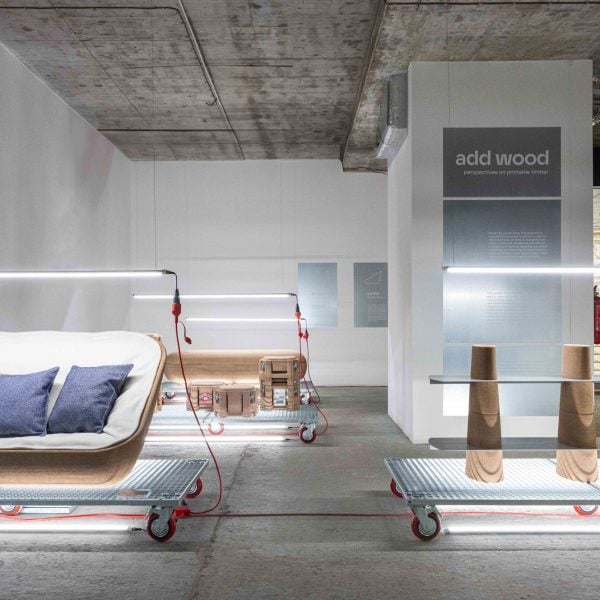A sofa, a coffin and a stackable multipurpose cube are among the items that were displayed in Add Wood, an exhibition exploring the potential of recyclable and biodegradable 3D-printed timber.
Designers Esmée Willemsen, Janek Beau, Friedrich Gerlach and Julia Huhnholz created four separate projects using EconitWood, which is produced by German company Additive Tectonics.
The material is made by combining leftover wood from sawmills and timber harvesting with a natural, non-toxic and flame-retardant magnesium carbonate binder, and its extrusion through 3D-printing allows for the creation of complex shapes without generating any waste.
Willemsen wanted to take advantage of the made-to-order nature of 3D printing with her design, a coffin called Finalform.stl. Her vision is that the design could be printed with adaptations for different bodies, while also incorporating personalised decoration at minimal extra cost.
She also wanted to reduce the environmental impact of burials by eliminating the metal grips, screws and other non-timber elements that would be found in a typical coffin, and potentially by adapting the design to optimise decomposition within soils at different locations.
“Using 3D printing as the manufacturing method felt like a natural fit for this project,” said Willemsen. “The flexibility of this process allows for adaptation to different body types and sizes, which is becoming increasingly important as larger-scale coffins grow in popularity.”
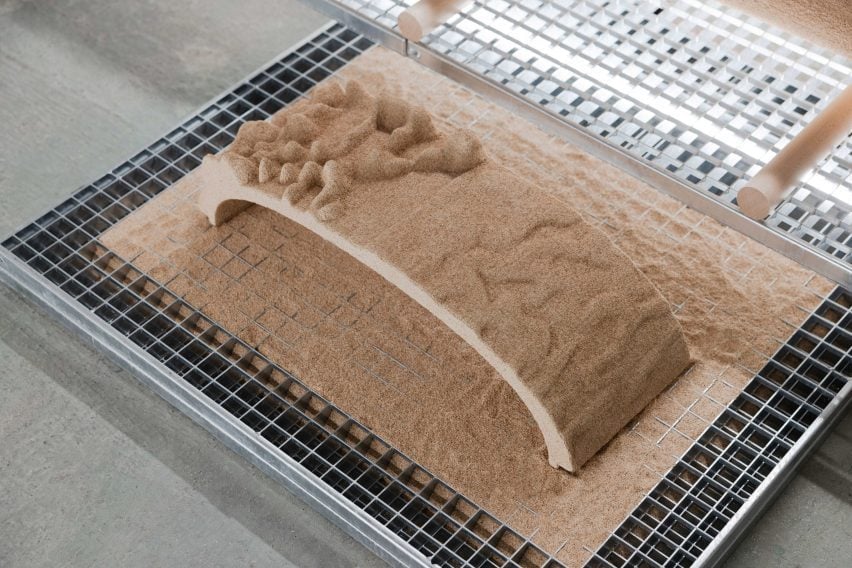
“Traditional coffins – the ones covered with paint or added metals or plastics – can negatively impact the soil over time, so using a material that supports better decomposition and filtration felt like an important step forward,” she continued.
“EconitWood also opens up possibilities for adapting the coffin’s density and filtration properties to specific soil conditions, making the design even more responsive to environmental needs.”
Gerlach orientated towards making the most efficient use of the 3D-printing process in his design, the Lumo sofa. The sofa has an EconitWood shell that is stackable in production to maximise printer bed space.
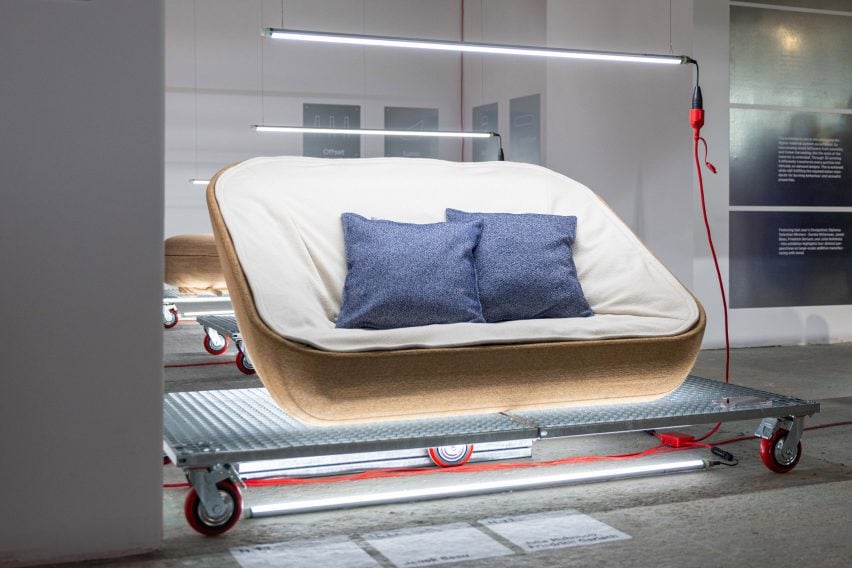
“I focused on one key characteristic of this 3D printer: it doesn’t really matter if it’s printing a single small object or an entire large block in one job — both take roughly the same amount of time,” said Gerlach. “Because of this, I decided to design an object that could be efficiently stacked within the printer’s build volume, thereby increasing its overall printing efficiency.”
“This approach could make the process more attractive to companies, as improved efficiency helps lower production costs. I also wanted to demonstrate the printer’s capacity, showing that it’s possible to print large-scale furniture pieces without any issues.”
The Lumo sofa is completed with a removable fabric suspended seat that attaches to a groove along the shell’s edge, and since both the upholstery and filling are 100 per cent wool, the sofa in its entirety would eventually biodegrade if returned to the earth.
Whereas many wood composite materials are made with a plastic binder, EconitWood’s is a natural and non-toxic mineral binder that it says would dissolve in water after some years in the natural environment, and the untreated wood would rot away. However, the company’s hope is that the products have a long life or be returned to the company for recycling.
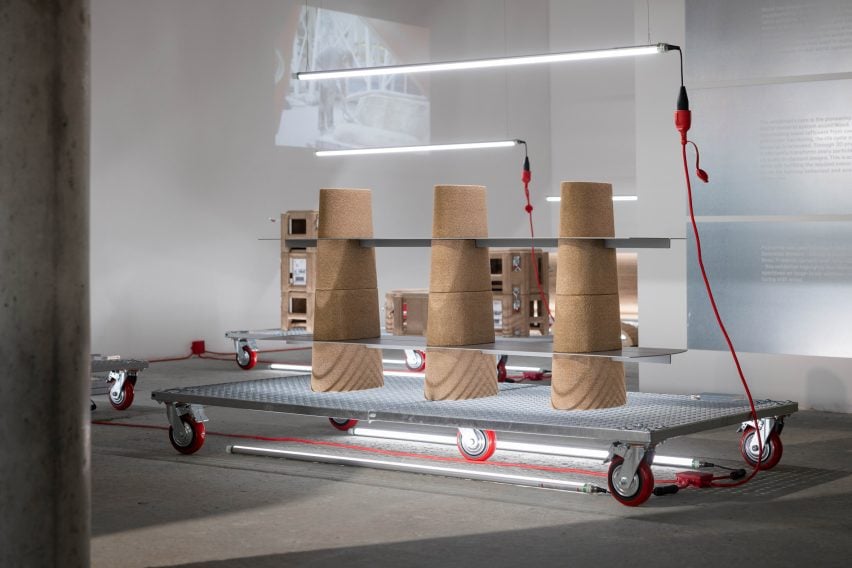
Huhnholz also designed for optimum efficiency with her piece, a shelving unit titled Offset. The unit is made up of three smooth and sculptural EconitWood posts, which have a conical shape designed so that the segments can be nested within each other during production and more can be made in less time.
To assemble the shelf the segments are simply stacked and completed with laser-cut aluminium plates.
“The Offset shelf was inspired by the idea of reinterpreting a traditionally wooden object using the unique properties of printed wood,” said Huhnholz. “The assembly of wooden poles and aluminium boards relies solely on precise geometric interlocking. The material’s textured surface required a few iterations to achieve the perfect fit.”
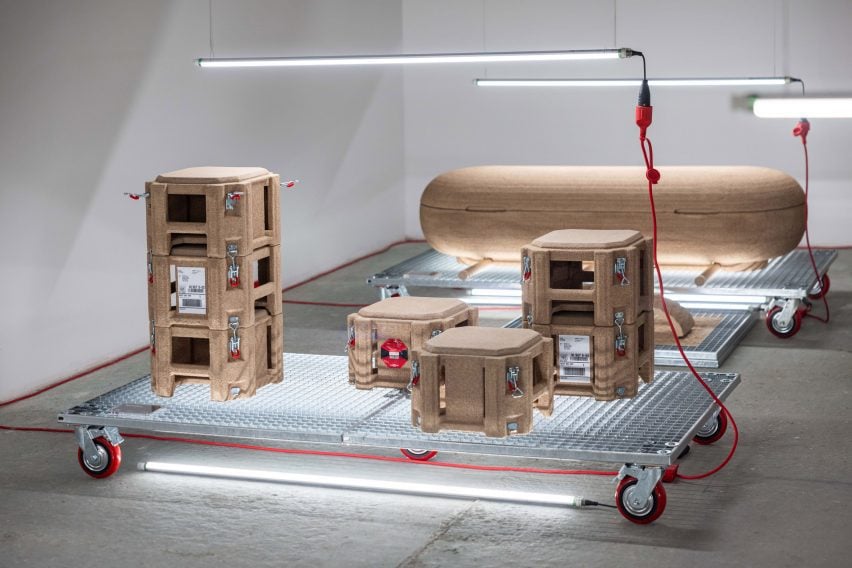
Beau looked at effiency from a different angle with his Sandbox stool, which becomes a multifunctional and modular furniture solution if used in multiples, with two modules creating the height of a chair and three the height of a table.
The modules can also be shipped without packaging as the dimensions have been optimised to comply with most shipping restrictions, with six modules fitting side by side on a pallet.
“I was particularly interested in exploring shapes that are typically avoided in wood production due to their complexity or inefficiency,” said Beau. “My goal was to create a furniture piece that is easy to handle and can be shipped efficiently. This led me to research outdoor cases, which inspired the design of my object.”
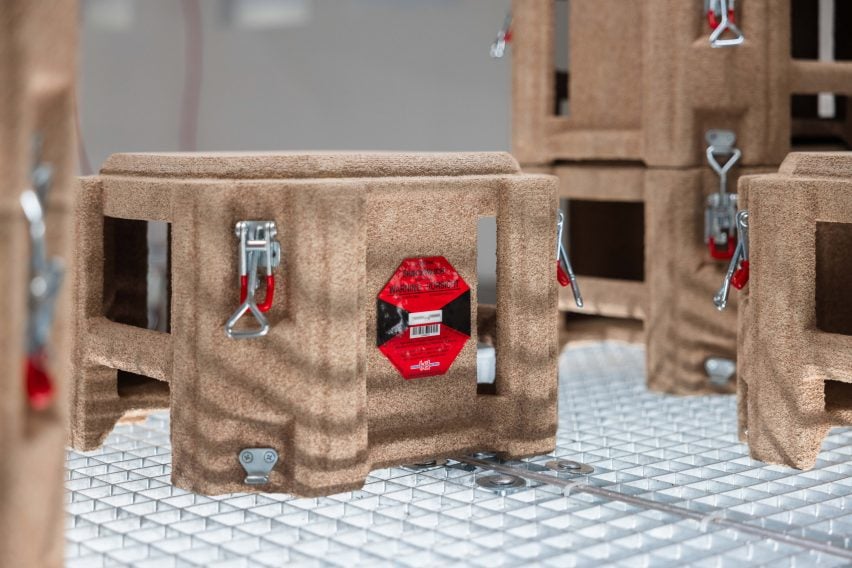
Willemsen, Beau, Gerlach and Huhnholz exhibited their EconitWood designs at Designblok in Prague, Czech Republic in October 2024. The four designers had been Designblok Diploma Selection winners in 2023, giving them the opportunity to exhibit at the 2024 event.
Instead of doing solo exhibits, the quartet banded together and approached Additive Tectonics about a collaboration using EconitWood. Their exhibition, Add Wood: Perspectives on Printable Timber, won the 2024 Designblok Award for Best Designer Presentation.
Other experiments with 3D-printed wood have included the Warp teahouse pavilion, which was made from shaped tiles by architects Kei Atsumi and Motoya Iizawa.
Designblok took place from 2 to 6 October 2024. See Dezeen Events Guide for an up-to-date list of architecture and design events taking place around the world.
